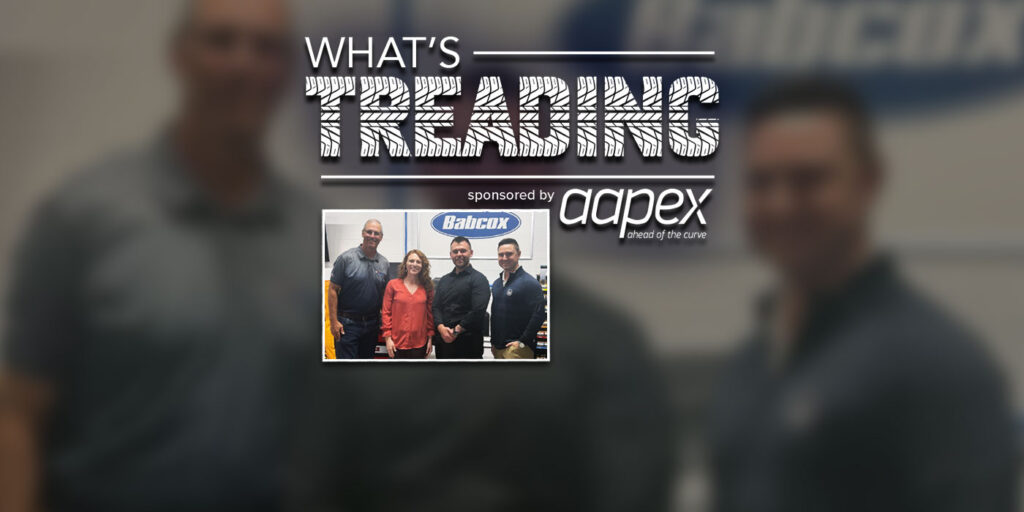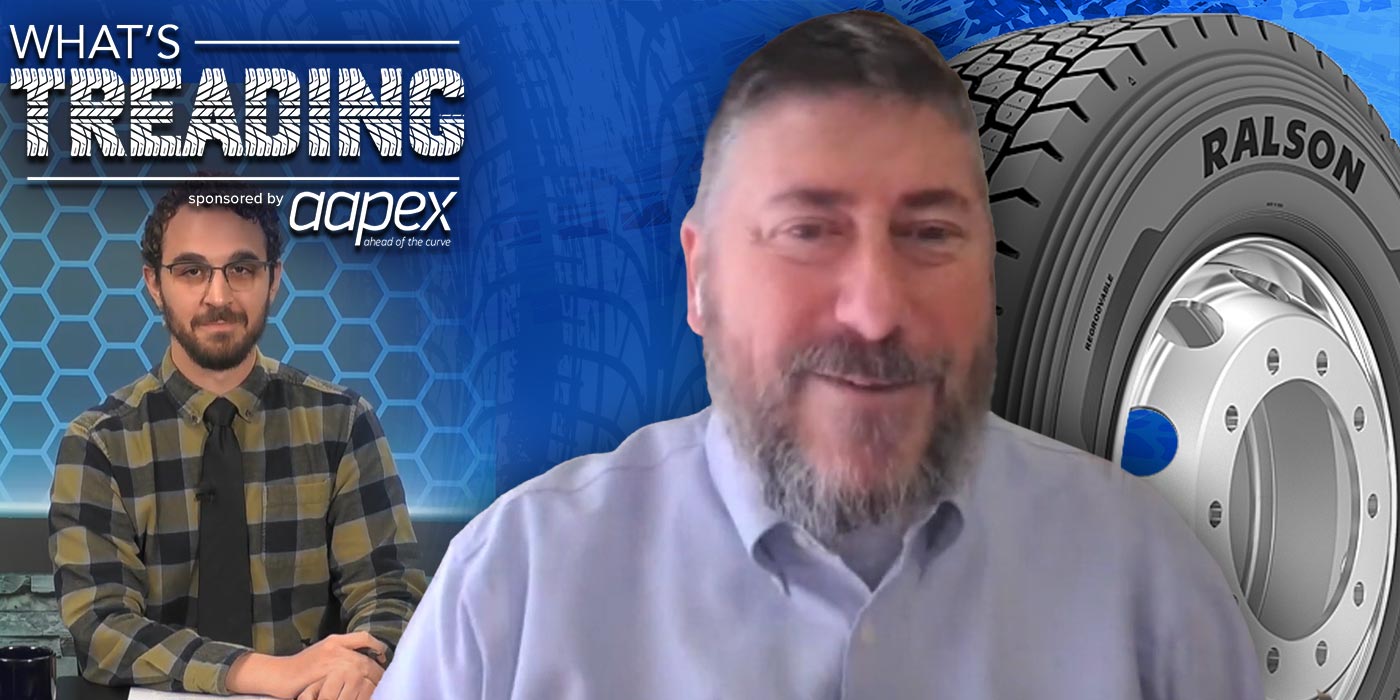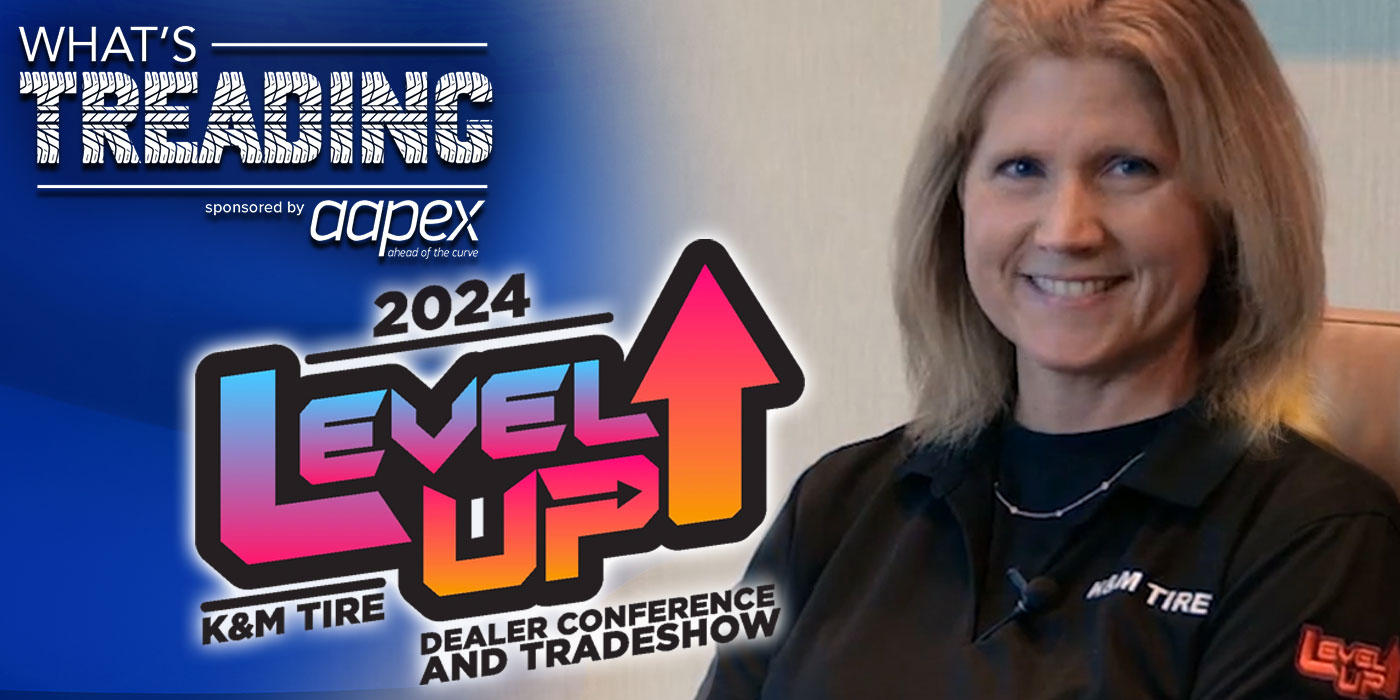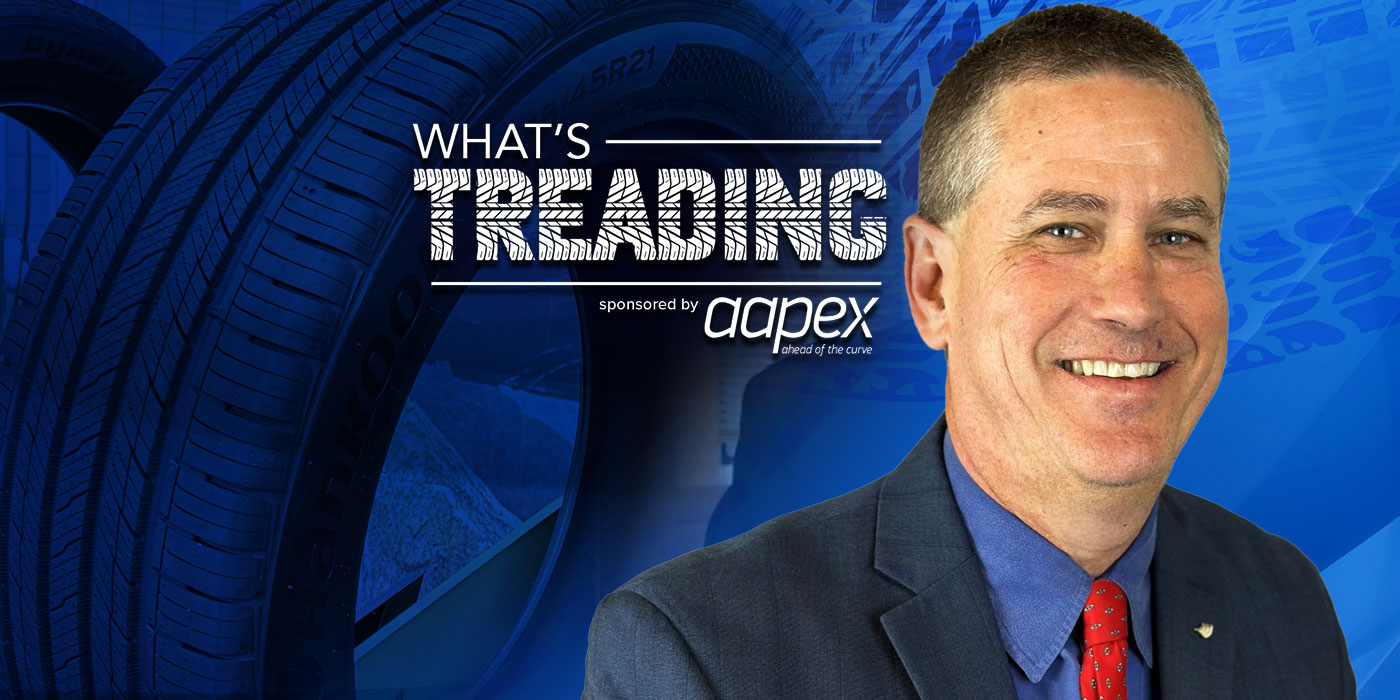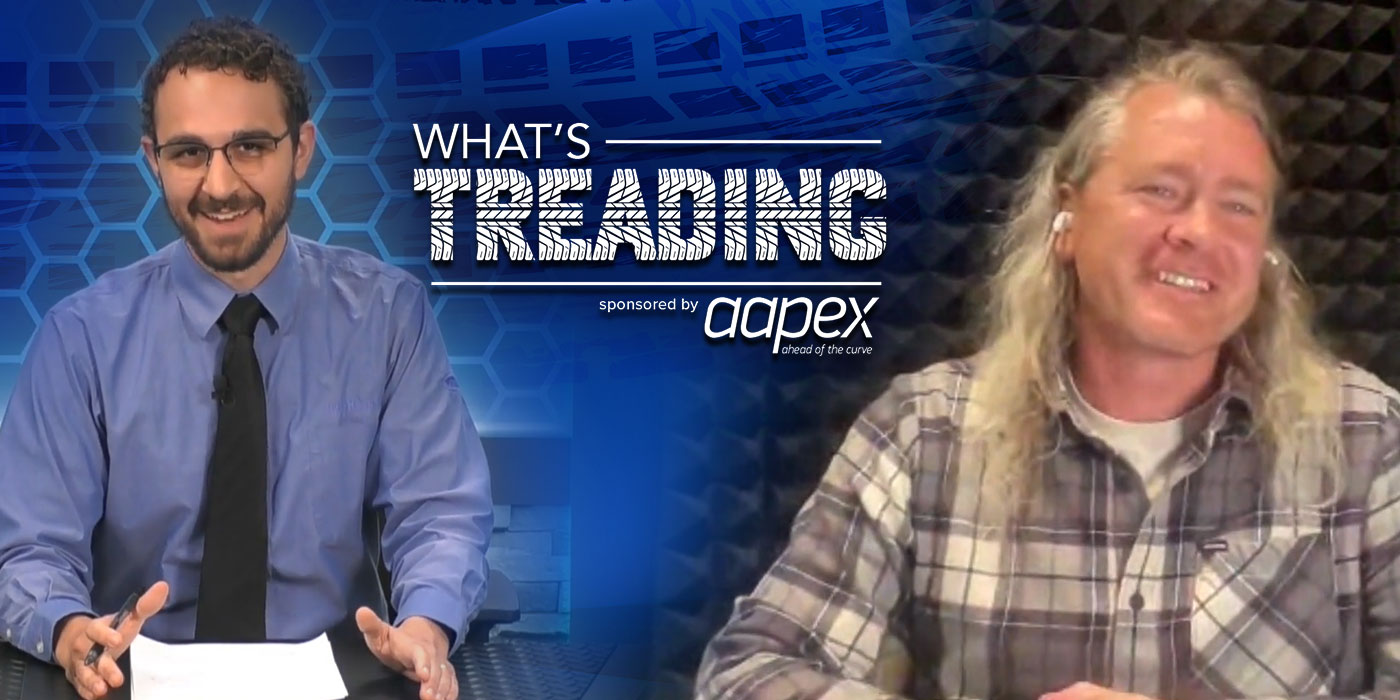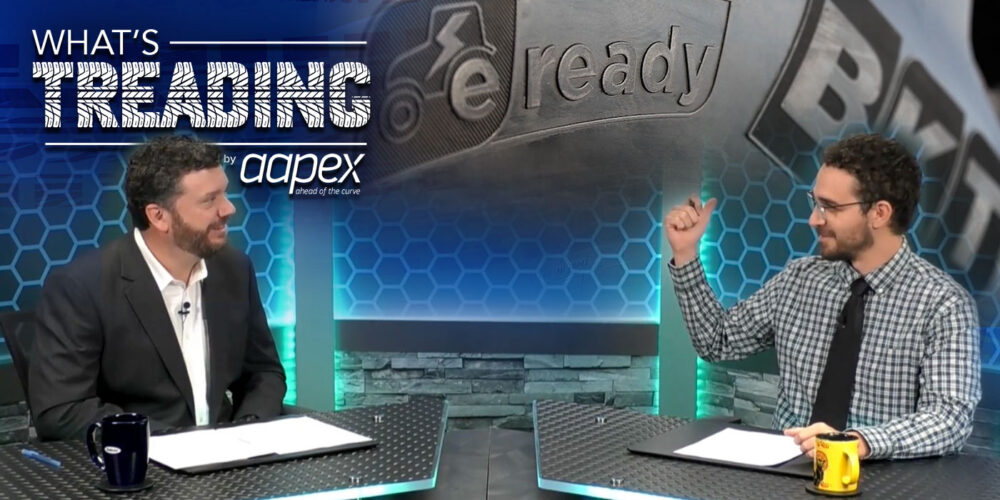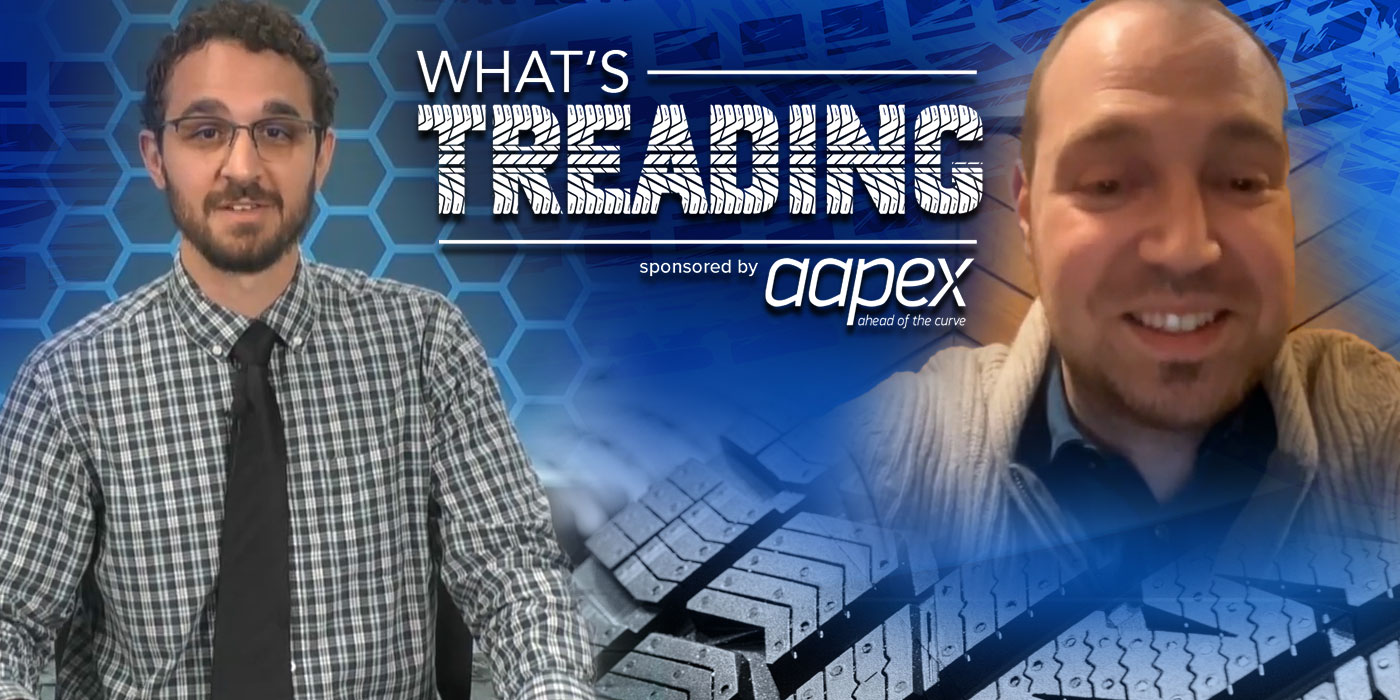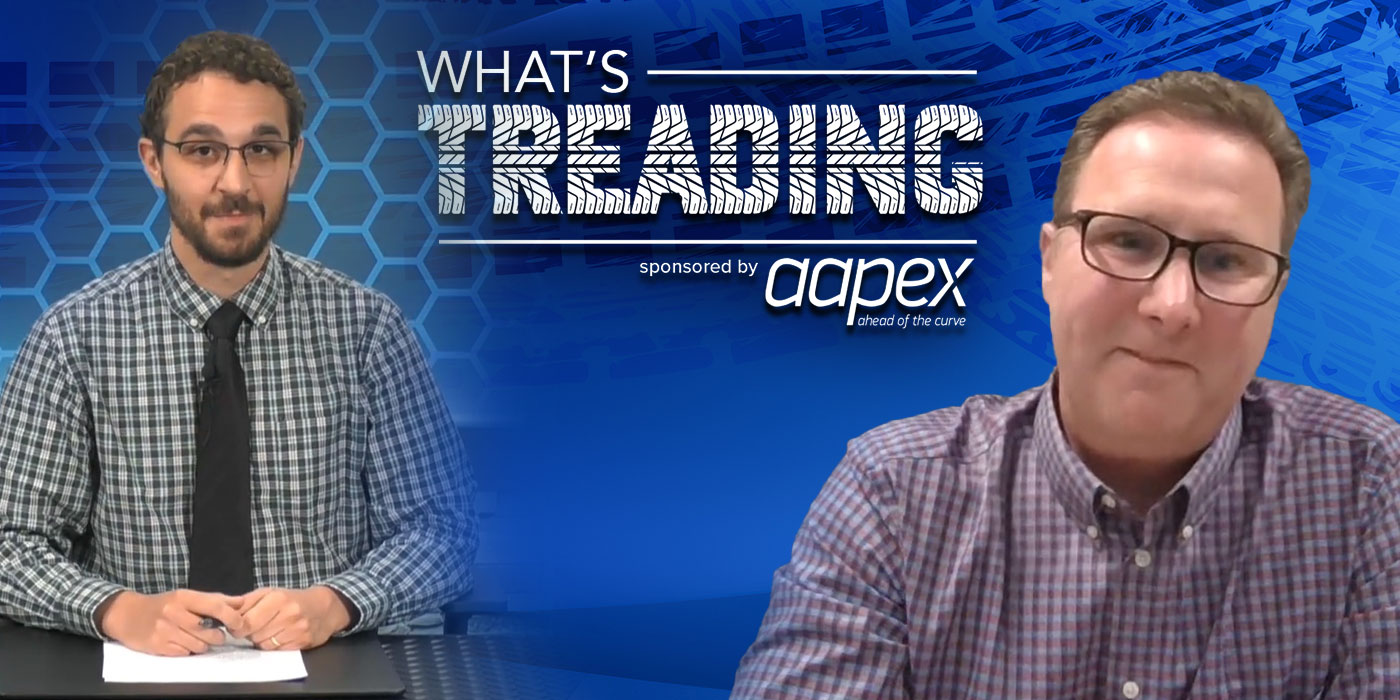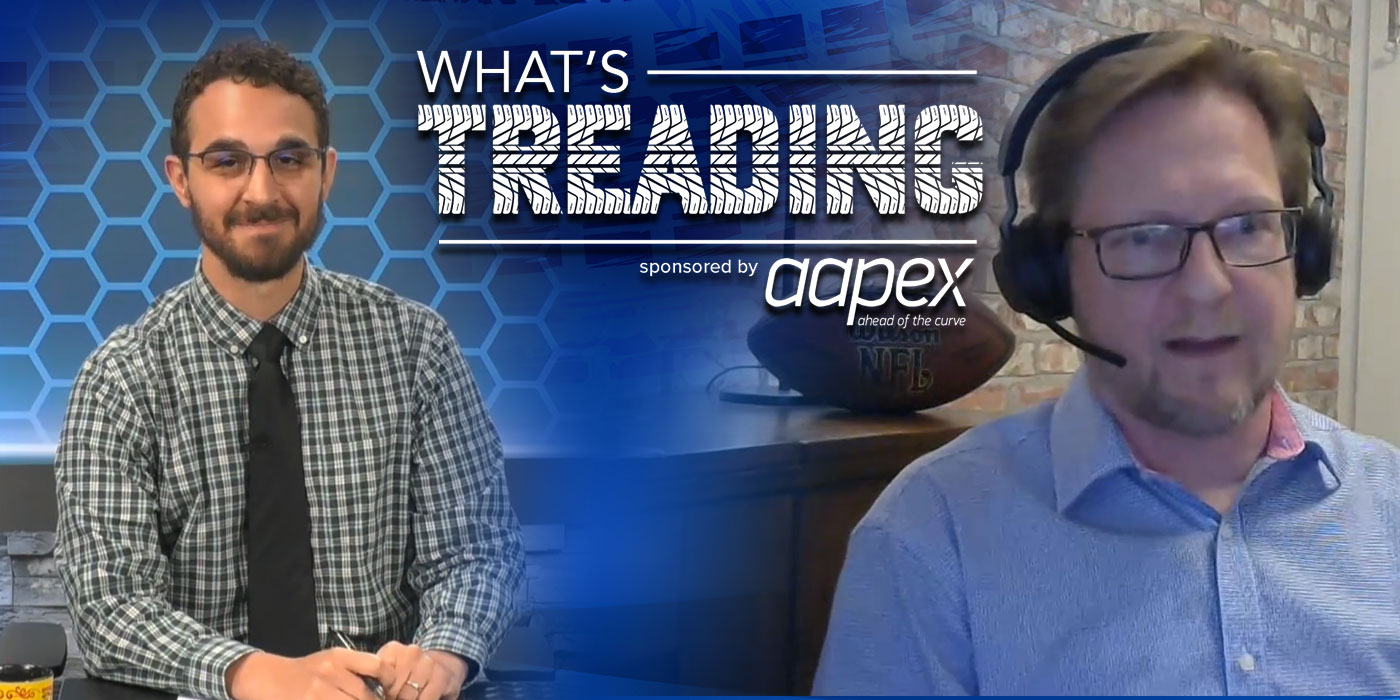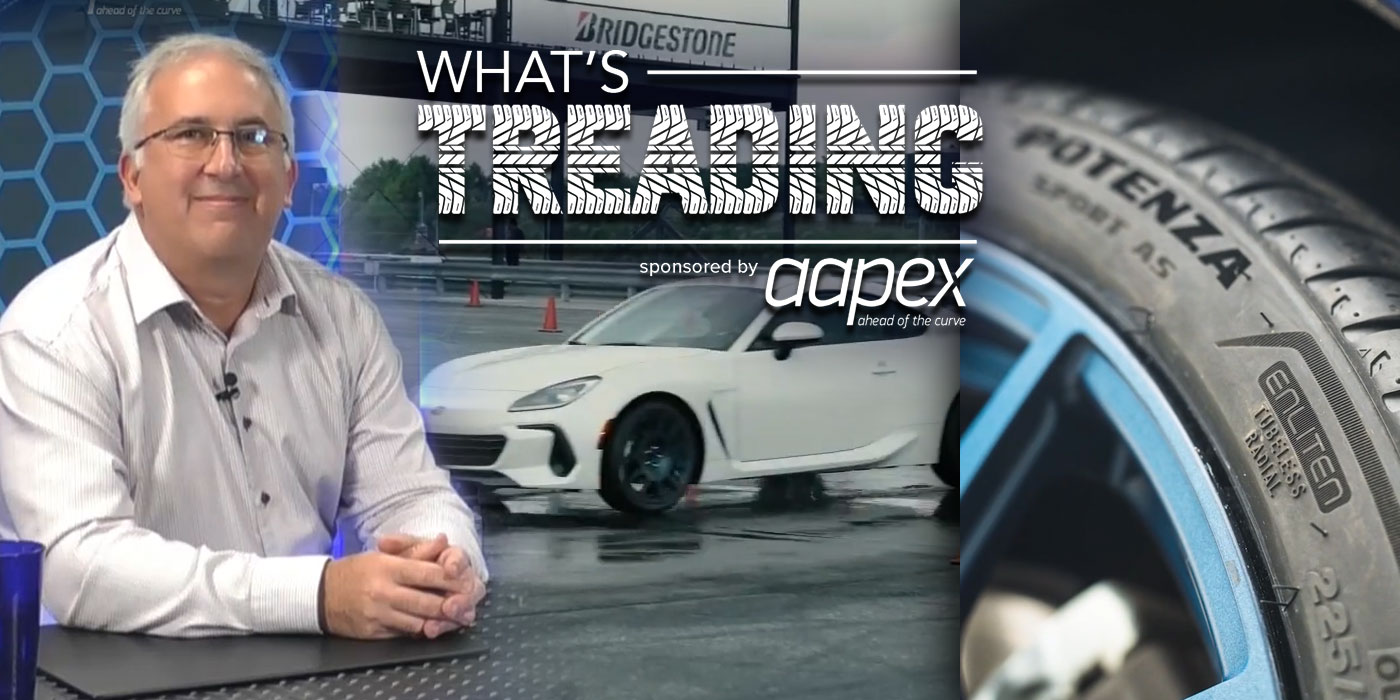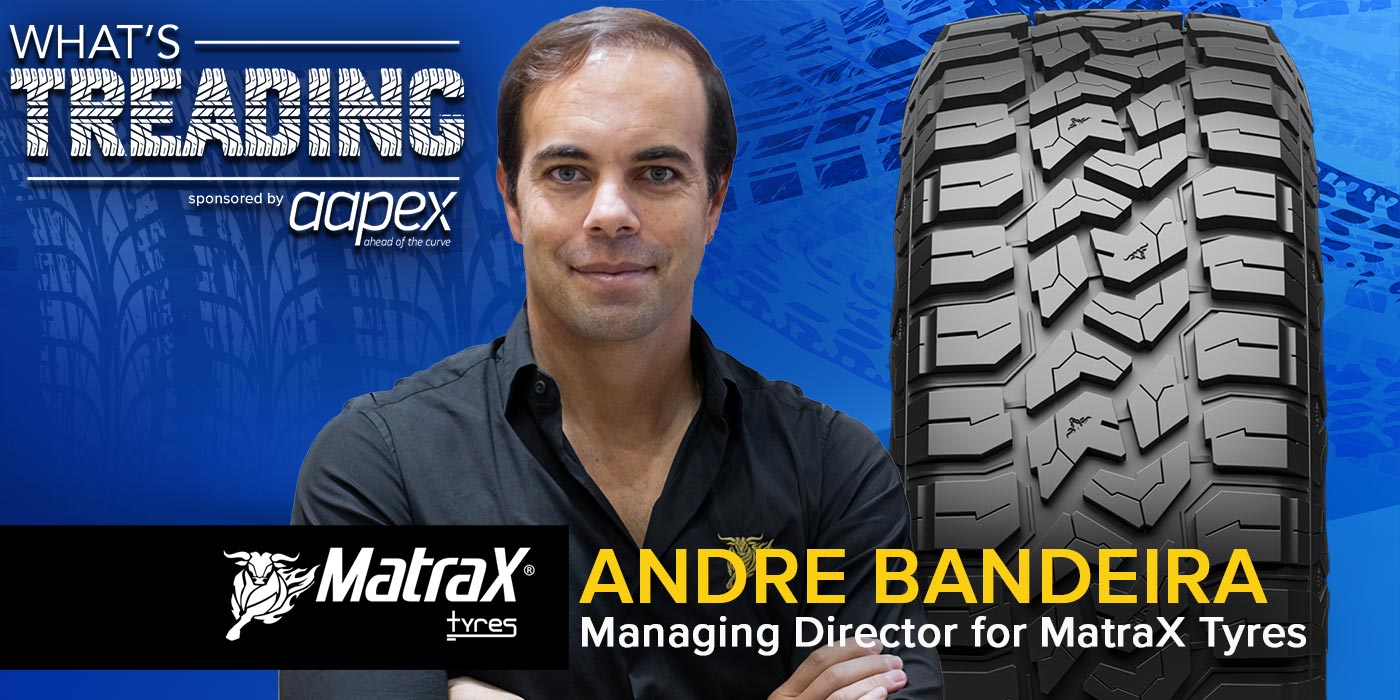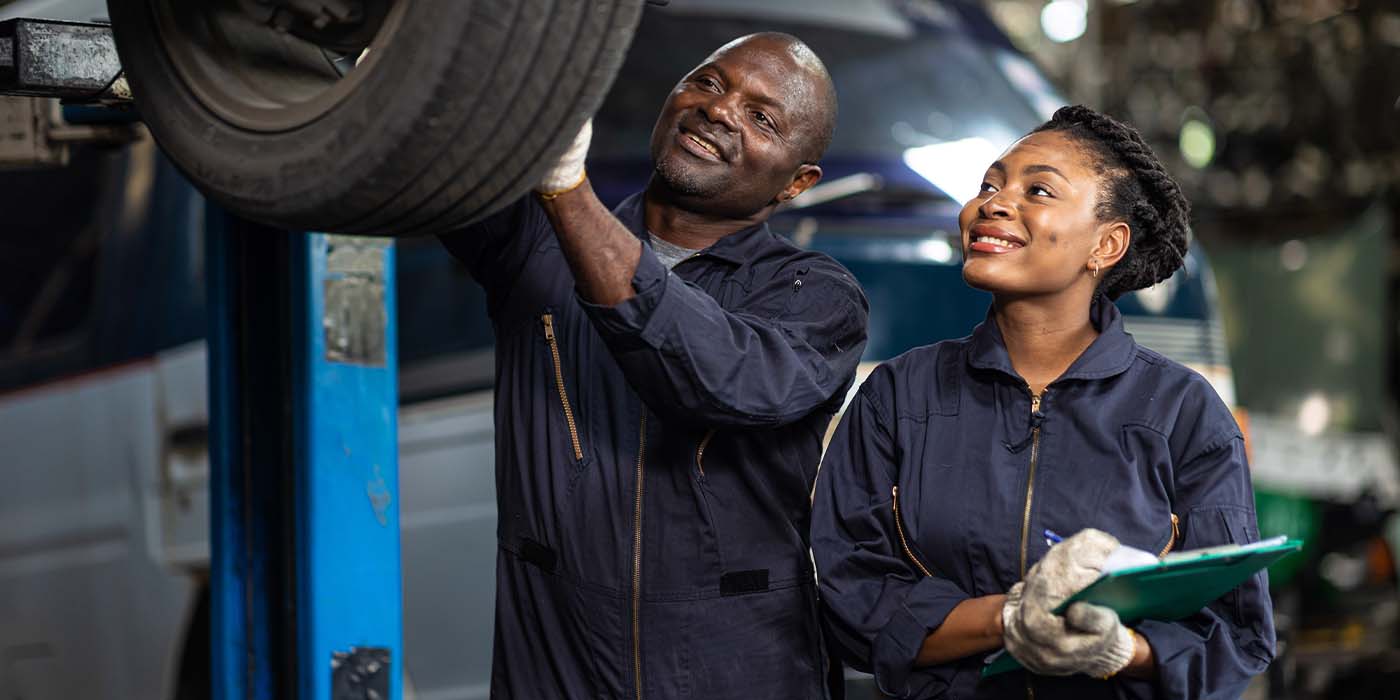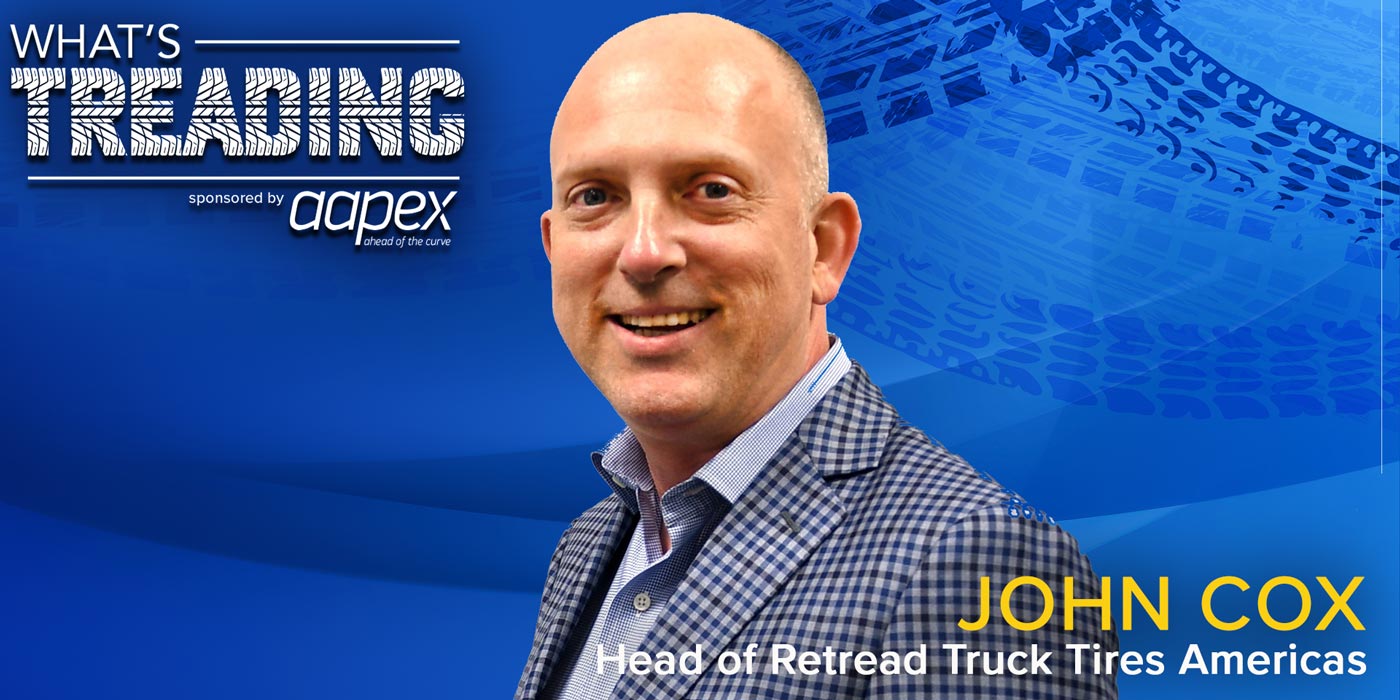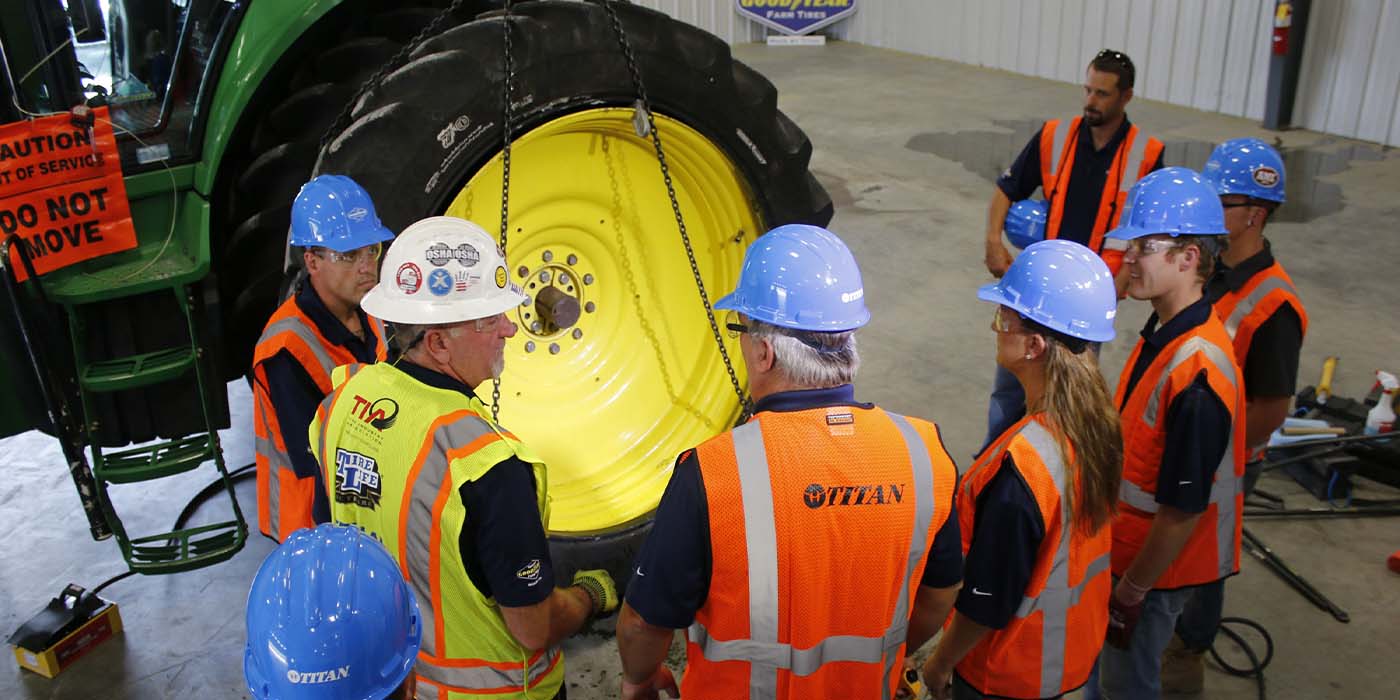Whether you’re hiring new people or wanting to “upskill” your current technicians, frequent training is a must for your staff to stay on top of new technologies and best practices. Training can come from many sources–manufacturers, parts suppliers, internally or even your own state tire and automotive association.
This year, the Ohio Tire & Automotive Association (OTAA), in partnership with the Tire Industry Association (TIA), decided to reallocate some resources to offer TIA training for its member shop technicians across the state. So, how did they get this training going? And what goals do they hope to achieve with it? In this episode of What’s Treading with Tire Review, presented by AAPEX 2022, we find out. Members of the OTAA –including Jeff Wallick, OTAA president and K&M Tire’s director of training, Alex Bohenke, OTAA executive director, and Tom White, OTAA board member and owner of six locations of Tire Source throughout Northeast Ohio– visited our studio to chat about the association’s recent training initiatives and how training can be a tool in retaining technicians and fighting the technician shortage.
EPISODE OVERVIEW:
- How the Ohio Tire & Automotive Association organized its month of training (1:02)
- The OTAA’s long-term training goals (5:09)
- Why making the investment in training is important for tire dealers (6:16)
- The need for a skilled workforce at the shop level and how it can be a retention tool for shops (9:43)
- What the OTAA hears from its members about the technician shortage and the resources it’s offering to help (12:29)
- The OTAA’s advice to other state associations interested in implementing a training program (15:02)
Subscribe to the audio podcast on Apple Podcasts, Spotify and Google Podcasts. You can also read the full interview below or watch the video version of this podcast on YouTube.
Maddie Winer: Editor of Tire Review: I’m so excited to talk about some of the training that the OTAA has done this month. You all launched a multi-year training partnership with the Tire Industry Association (TIA). So some of this training is a part of OTAA’s “Month of Training.” Can you kind of explain that and how this partnership came about?
Jeff Wallick: Yeah. So first of all, thank you for having us. Thank you to Tire Review and to the viewers as well. So for us, I think to really understand that question, we have to go back to the very beginning. We’ve actually been around since 1967 serving tire dealers and automotive retailers in the state of Ohio. And for a long time, we had a college scholarship program, and it was really good. We contributed back to our members and to their kids, and at some point, we all kind of sat down and we thought: we’re member-funded. Is this the best use of member resources that we possibly could come up with? We did see some people coming back into the industry, but for us, we decided to kind of retool that college scholarship program into an “upskilling” opportunity.
So fast forward to January of this year, we had a conversation with Dick Gust, who’s the CEO of the Tire Industry Association, and decided right then and there that it makes sense for us to partner with them [TIA] for a longer-term thing. The objective was to bring their 300- level ATS, Automotive Tire Service, training to our members. We thought, what’s the best way to do that? What will serve our members? Well, we probably ought to go to them. So that’s where the TIA partnership really came from.
It was around April earlier this year that a couple of our board members who run fantastic businesses had partnered with this company called Garage Gurus in the past. It just so happens, they’ve got a big facility and some offices, and their leadership team is in Illinois. So, I took a trip up there and met some of their team and launched a training partnership with them. So for us, TIA ticks the box for tire training. Garage Gurus ticks the box for automotive training.
So, how did we launch this partnership? We do an annual golf outing for our members once a year, and it’s a fantastic member event. For us, we paired that golf outing [with training] and did some training for our members and their technicians in the Columbus, Ohio, area. That was in August of this year. We had two days of training, four-hour workshops each day, and had something like 15 different technicians come through that training. It was a successful way to launch a training partnership for sure.
Alex Boehnke: This would not have been possible without the tremendous leadership by our board and by Jeff to really reimagine what our scholarship program, now training program, would look like. Without their hard work and volunteering their time, we wouldn’t even be able to offer this for our members. So tip of the cap to them.
Tom White: The other key is how energetic and young you are, Jeff. As far as bringing the training agenda out that we talked about. I mean, it’s exciting
MW: And it’s a rigorous schedule, too. You guys have the training in you mentioned Columbus, there’s some in Cincinnati as well this year. Is that right?
JW: Yeah. This week, we’re doing CTS training with TIA at the Goodyear/Cooper Tire headquarters in Findlay. So, we’ve got a couple of tire technicians of our members going through that. Last week in Findlay, we had ATS training and had a couple of technicians go through that. And then, on October 11-13, we’re going to be at the Tire Discounters training facility in the Cincinnati area, and we have some TIA ATS training going on there. So, it’s a fair amount of coordination. We have a fantastic board leading the way. To me, I think if somebody’s going to run a successful state tire association, an engaged board is a key. If you have that, you have everything.
MW: For sure. Are there other training opportunities coming down the line? Do you guys hope to continue these programs?
JW: For sure. Our intention when we started this was, No. 1: What’s your objective? You have to be really clear on what your objective is going to be. Beyond that, how do you define success? If you’re looking for a room full of 50 members the very first year you do this to call it success, you’re going to be woefully upset with yourself. For us, we were really clear on what success looks like this very first year. Because of that, I think it allows us to take a more long-term approach to these training partnerships. Absolutely, our intention is to do these for several years to come, well into the future. And we’re also working on a new training partnership. We’re not in a position to talk about it just yet.
MW: We’ll follow up. Very cool. Well, I know this is a big investment. Training is a big investment not only for tire dealers and automotive repair shops but for the OTAA as well. So how much is the OTAA investing in each technician per session? Can you maybe talk about some of the investments from your side?
JW: Yeah. So I like the word investment there. I think that’s important. And for us, training absolutely is that. When you invest in people, you’re going to get a return. So for us, we know that let’s say we invest something like a thousand dollars per technician, and I should say the board prior to me joining were good stewards of the resources, including Tom for a long time. So we’re in a position today to be able to make those investments in our members. If we invest something like a thousand dollars into a technician, we know that there’s going to be a return, not only to the business but to me, I think if we’re not getting people home safely to the people who love them most every day, is that successful? So we can replace stuff, a vehicle falls off a lift, God forbid, we can replace stuff, but we cannot replace that person. So if we can help a tire technician to do their job 10% safer, that’s been an investment well worth making.
AB: If our industry is going to thrive and continue to be able to grow and if we’re going to be able to continue to have the independent tire dealer be the focus of our association, we have to have a workforce and a skilled workforce. So making those investments, giving back to our membership to make sure that hopefully, we won’t hear stories anymore of when someone’s getting ready to open a tire shop, but they don’t have techs to fill the tire shop. That’s a huge problem. I mean, the demand’s there, the customers are there…There’s a safety component and a workforce component on behalf of the industry…that’s what it’s really about.
MW: For sure. For Ohio tire dealers interested in the OTAA training, can you maybe describe where they can find out more information about this?
JW: Yeah. So we started the partnership focused on the ATS training, and then through my work with K&M Tire, we saw a real need for commercial tire service training as well. So, where can a member go to find more information? In Ohio, we have something like about 200 different members, and we’re the birthplace of the tire industry. We’re really proud of that. So if somebody is not currently an OTAA member or you’re not sure, you can always reach out to us, [email protected]. Otherwise, ohiotire.org is the place to go. And then we’ve got a training tab on there. I shot a short video to give somebody an idea of what’s in store. And then we have a QR code and also a link to sign up for the actual training. So we have one more training event later this year in October 2022. Then we’ll update the website once we have our training calendar scheduled out to 2023.
TW: But the key to that is to become a member of the OTAA. I mean, that’s the big component.
Alex Boehnke: Folks can find us on Twitter and LinkedIn as well, and all the social media channels, too.
MW: Awesome. Get connected. Now, Tom, I wanted to talk ask you, as an independent tire dealer, you’re local, six locations in northeast Ohio with Tire Source. I know you guys take part in a lot of training, so can you describe maybe the importance of training to you and the employees in your business?
TW: Sure. What I always say is you’re only as good as your least-trained associate, so it’s important that we have entry-level technicians starting out that are changing tires, changing oil, and the number one thing to do is be safe. So that’s first and foremost. And then we want to protect our customer’s assets. But it’s so vitally important that they do the training. They [must] understand how to lift a car, where to properly lift a car, how to stay in a safe range, how to wear all their protective gear. There’s a lot to the training. Some of it’s very basic, but that’s the walking, breathing part that everybody has to do. The eye protection, the shoes. There are a lot of components that you have to make sure that they’re up on in the training.
MW: For sure. Do you feel training has been an important retention tool for you guys at Tire Source?
TW: Very much so.
MW: How has it played a role?
TW: We like our guys to be ASE-certified, and all of them are not TIA-certified, but that’s one of our agendas for 2022 and 2023, to make sure everybody that works on a tire is TIA certified. We think that’s important, and we’ve talked about that many times. If there’s a way to dangle a carrot in front of our guys as far as to get the ASE certifications, or even get an entry-level associate that wants to learn our industry and then give them some sort of a scholarship. I mean, I’m willing to say, “Hey, let’s offer them a scholarship to a good technical school.” And we need people. It’s not a bad industry, and it’s been pushed back so much over the years, the trades, but you can make a really good, decent living in northeast Ohio.
MW: Safety’s number one. But also maybe as an incentive to get to the next step?
AB: And pay increases as they get more certificates. So that’s the carrot part of it.
MW: Got it. It’s great to see that investment. Now, you were talking about the technician shortage. Obviously, it’s been a problem in our industry for quite some time, and it’s sort of been compounded by these recent labor shortages. What are your members telling you about finding qualified technicians these days? So this may be a question for all of you.
TW: I’ll take that one. It seems like right now, it’s still very difficult. It’s almost impossible to find a finished product of a technician. So we’ve found, what’s worked best for us is to grow them from within. But the issue we’re having right now is we have people come in and they’ll interview, they will take a position, they’ll onboard, and then they don’t show up… And it happens probably once a week. But we found that growing the people from inside has helped us the best, but it’s tough out there.
JW: In my work at K&M Tire, we work with 20 to 30,000 independent dealers all over the country. And it’s something that we’ve heard for quite a while. So I think for years at least, I’m not going to point at anybody else, but for me, I was looking for what’s the silver bullet answer? And I think the reality is that this has kind of been the existential crisis in the industry, and it’s been that way for a while. So, I think if there was an easy answer, we would’ve already found it. I think the answers we’re looking for are likely to be a formula. To Tom’s point, growing your talent from within, focusing on upskilling your people is going to be an important part of that. I also like that Tom talked about not just acquiring new talent, so there’s an incentive for somebody to come join Tire Source or any independent dealer, but it’s a retention tool as well. I the answers we’re looking for are likely to be part of a formula. I think upskilling and some of the work that we’re doing at the OTAA is part of that.
MW: For sure. And the OTAA has done so well in creating a great community within the organization and offering so many resources to its members, like this training. So if you were talking to other state associations and they’re interested in providing training to their members, how would you recommend they implement it?
JW: So there’s several really remarkable state tire associations. A couple that stand out – this is not an all-inclusive list, but North Carolina, California, Texas, the Northeast– they have fantastic state associations. In fact, I wish we communicated together a little more often, and maybe that’s coming. I’d love to get in touch with them, but I’m about as biased as it gets.
So I think if another state association was looking to get into some sort of training for their members… I touched on it before, I think the first thing you have to do is figure out what specifically do you want to accomplish? If you start with an unclear objective, you’re likely to end up not where you want to be. So once you know specifically what you want to accomplish, I want to offer tire training, and I want to offer automotive training. From there, how do you define success? From the very first year, if you say, I need to have full classes, otherwise, we’re going to kill this thing right off the bat, I think somebody’s likely to set themselves up not to be as successful as they could be. So for me, I think it would be getting crystal clear, what does success look like? And then finding the right partners. So that’s what worked for us. That’s the formula. It certainly doesn’t mean it’s going to work somewhere else. I think if there was somebody involved in a state tire association elsewhere and they wanted to get in touch, I would love to talk to that person and share best practices because I think when one gets better, we all can get better.
Check out more episodes of What’s Treading with Tire Review here.

